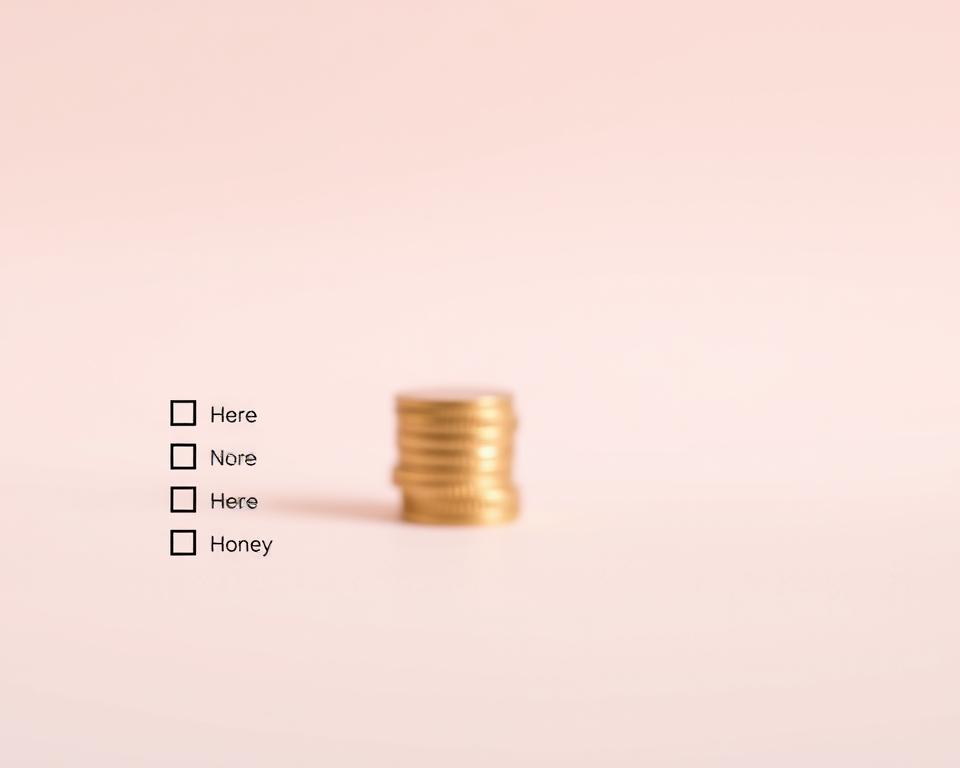Anúncios
Money Basics trends 2025 puts clear, practical information at your fingertips so you can sort signal from noise.
You may have seen new ideas on social feeds. Recent research shows about 20% of U.S. consumers and nearly 30% of Millennials tried a finance trend they found online.
This guide explains what changed, what stayed the same, and why it matters for your life and goals. Expect short, simple steps on planning, safe checkouts, emergency funds, debt focus, retirement reviews, and document updates.
Use these notes as general education. Adapt tips to your situation and consult qualified tax, legal, or investment professionals for advice that affects your finances.
Introduction: Money Basics trends 2025 and why they matter to your daily life
Your finances touch daily life in visible and subtle ways, from bill splits to long-term goals.
Context and relevance
About 20% of U.S. consumers—and closer to 30% of Millennials—have tried a social finance idea they found online. New payment options like embedded checkouts and conversational payments are changing how people pay and shop. At the same time, an economy that is still adjusting to higher prices and shifting policies means you may need to refresh your budget.
This short report shows simple ways to separate useful trends from hype. You’ll get steps to revisit your budget, check an emergency fund (three to six months of essentials), prioritize high-rate debt, and review retirement contributions. Expect practical tips on cutting expenses, organizing debt, and right-sizing savings so your financial goals match your needs.
How to use this guide responsibly
Use this as education, not individualized advice. Adapt suggestions to your situation and consult qualified professionals when stakes are high.
“Financial worries can affect mental health; clear goals and boundaries help.”
- We cite current sources for adoption rates and payments innovation.
- Look to the sections ahead for planning, insurance, and investments highlights.
- Follow the steps here to strengthen everyday management of your finances.
Signals shaping 2025: economy, policies, and consumer behavior
Signals from payments, policy, and consumer choices are reshaping how you handle everyday purchases. These shifts affect the broader economy and the rules that govern your accounts.
Payments now blend into apps and devices. Checkouts are often invisible. That changes how you think about refunds and subscriptions.
Identity and data rules matter more. New policies influence what information travels with each transaction. This affects verification and privacy choices.
Cross-border transfers are faster and clearer. People expect the same speed and tracking they get domestically. That shapes your planning for travel or gifts.
- You face a year where payments fade into experiences; watch fees and wait times.
- Programmable transfers and smart contracts can automate bills or investments.
- Super apps put investments and goals inside everyday tools, changing how you spend your time.
- Richer payment information helps budgeting but raises privacy questions.
“Match your strategy to how rails work so you don’t overpay or wait longer than needed.”
Practical step: Review which apps hold your accounts. Set alerts and limits. Align each tool with your goals to keep control of spending and investments.
Money Basics trends 2025 in your feed: what’s helpful and what to skip
Online trends can nudge how people plan spending, but not every viral tip fits your life. About 20% of U.S. consumers—and close to 30% of Millennials—have tried a social finance trend, so you’re not alone if a challenge caught your eye.
No-spend and low-spend challenges
No-spend streaks can reset habits and could help you spot cheaper or free options at home. Try a low-spend version if strict rules feel stressful.
Underconsumption-core: a middle path
Buying less has benefits, but avoid guilt-driven cuts. Meet your real needs and keep a steady plan for savings and essentials.
Loud budgeting and vibe vs values
Tell friends your price range to protect goals without isolating yourself. If a vibe-based choice feels emotional, pause and realign with your values.
Reframing small frugal moves
Simple habits—cooking at home, reusing containers, carrying a bottle—add up. Track the saved dollars and move them into a clear fund for bills or an emergency top-up.
- Track expenses during a challenge and set an end date.
- Pick bits of a trend that match your needs; skip performative parts.
- Keep goals visible so small wins support long-term plans.
“Use trends for motivation, not clout.”
How money moves in 2025: payments and fintech trends that touch your wallet
Everyday purchases are shifting to happen behind the scenes, and that changes how you manage cash and accounts. Below are clear, short explanations and practical takeaways so you can spot useful services and avoid surprises.
Invisible payments
Embedded pay systems let your car, ride app, or smart fridge complete purchases without a separate checkout. A real example: an EV that pays for charging automatically.
Takeaway: Check provider settings and set alerts so you can reconcile transactions quickly.
Cross-border transfers
Transfers now show fees up front and offer tracking like a shipped package. This helps people and small business clients pay suppliers or family abroad with less guesswork.
Takeaway: Compare providers for speed and transparent pricing before sending larger sums.
Digital identity and biometrics
Biometrics and device-based IDs replace passwords and cards in many apps. They speed verification but mean you should know how a provider stores your information.
Tip: Limit biometric use to trusted apps and review privacy settings.
Conversational payments
Voice and chat interfaces can send or split funds on request. They are convenient in hands-free moments but need strong passphrases and limits for shared accounts.
Takeaway: Enable spending caps and confirm transactions via multiple steps where possible.
Programmable money
Smart contracts let payments follow rules—release funds on delivery or split bills automatically. Small business owners use this to reduce disputes and speed reconciliation.
Takeaway: Test rules with low-value transactions before scaling up.
Payments as data
Transactions carry invoice numbers, delivery IDs, and other context that improves bookkeeping for businesses and people alike.
Takeaway: Choose providers that surface rich information to simplify reconciliation.
Super apps and decentralized networks
Super apps bundle banking, investing, and insurance into one view. Decentralized and hybrid networks support micropayments and cross-border flows with different compliance needs.
Takeaway: Review product terms and local policy before consolidating accounts.
Financial inclusion
Mobile-first designs, agent networks, and simplified KYC bring more people onto digital rails. That expands access but also requires clear, localized support.
“Match convenience with control: set alerts, read permissions, and pick trusted providers.”
- Track automatic transactions to avoid surprise charges.
- Compare providers for fees, speed, and data detail.
- Use limits and multi-step verification for conversational payments.
For a deeper look at how providers and products are evolving, see this fintech trends overview.
Your 2025 personal finance playbook: simple steps you can take now
Focus on what you can change this month to strengthen your cash and plans. Small moves add up and are easier to keep than big one-time pushes. Below are clear actions you can take in short blocks of time.
Refresh your budget for prices today
List your income, fixed bills, and variable expenses. Trim at-home costs you can live without and track results weekly.
Check your emergency fund
Aim for three to six months of essentials. Set small automatic transfers the day after payday so the fund grows without thinking.
Tackle and simplify debt
Prioritize high-rate balances. Use raises or bonuses to cut principal and consider consolidation to reduce the number of payments.
Review goals and investments
Write down short and long timelines for retirement and big purchases. Check contributions and rebalance asset mixes as your horizon changes.
Update insurance and estate documents
After major life events, revisit coverage, your will, powers of attorney, and health care proxy. Get professional advice for legal or tax choices.
“Small, repeatable steps protect your time and energy while improving financial resilience.”
- Track expenses weekly and keep two simple habits, such as a Sunday check-in and automatic savings transfers.
- Make adjustments over days and weeks, not all at once.
Spending, mental health, and financial wellness
Financial strain often grows when daily demands outpace a simple plan. Research from 2022 links financial worries to higher psychological distress among U.S. adults, so clear boundaries matter for your mental health and overall financial wellness.
Why stress rises and how boundaries help
Stress often spikes when goals are fuzzy, spending is reactive, and social feeds push comparisons.
Simple limits—like a monthly eating-out cap or a travel budget—give you a concrete way to say no without guilt.
Designing habits you can actually sustain
Pick one small routine and pair it with something you already do. For example, review accounts after your morning coffee.
Use a 24-hour pause on nonessential buys and set alerts for low balances or large transactions so management feels proactive, not crisis-driven.
“When pressure rises, scale back challenges and refocus on your goals and needs.”
Try these practical ways to support your life:
- Weekly check-ins to track spending and mood.
- A shared bill calendar to reduce surprise stress.
- A small fun line in your budget that could help prevent binge spending.
- Talk to someone you trust; a therapist or financial counselor can clarify your situation.
Security, privacy, and policy awareness in 2025 money management
Digital ID and app permissions now shape how your accounts stay safe across devices. Pay attention to policy pages and privacy summaries before you link accounts or add a new product to your phone.
Protecting your digital identity across devices and apps
Use strong, unique passwords and a password manager. Turn on multi-factor authentication for all money apps and services.
Review app permissions and disconnect products you no longer use. For voice or chat transactions, enable voice PINs and set purchase limits to protect clients in your household.
Reading the fine print: data sharing, fees, and compliance basics
Check how providers store biometrics and how long they keep identity data. Note that transactions carry richer details now; understand what gets shared.
- Read fee tables and compare dispute handling before you move accounts into a super app.
- Keep device OS and banking apps updated to save time in an emergency.
- Back up statements in a secure vault and plan what planning reports you want exported.
“Control permissions early — it cuts risk and keeps your daily routines simpler.”
Final note: This is general advice; seek professional help for complex legal, tax, or insurance matters.
Opportunities for households and small businesses to take advantage of trends
Households and small firms can use new payment tools to simplify routine tasks and protect cash flow. Many providers now show cross-border fees and offer faster settlement. That clarity creates practical opportunities you can use today.

Household strategies
Automate minimum payments for bills and a small savings transfer the day after payday. That helps you avoid overdrafts while you build a modest fund.
Stay hands-on for irregular expenses and big goals. Align due dates and use paycheck-synced transfers so cash flows match your calendar.
Small business moves
Enable faster payment options and add clear invoice fields to speed client approvals and reconciliation. Payments that carry richer data cut manual work.
- Test provider tools like invoice matching or receipt capture with one account first.
- Compare support for payment links, QR, and embedded checkout, plus fees and settlement times.
- Build a modest operating fund tied to your goals and review insurance coverage annually.
“Pick tools that replace repetitive work — the advantage is strongest when time saved outweighs cost.”
Train the people who handle payments on phishing, refunds, and dispute steps and write a simple strategy so everyone follows the same process. For tax, legal, or accounting questions, consult a professional.
Conclusion
Finish by focusing on clarity and small routines that reduce stress and drift. Keep what fits your life and discard the rest.
Practical steps: revisit your budget, check your emergency fund, and prioritize high-rate debt. Set a mid‑year review so your goals and planning stay aligned with your days and changes in circumstance.
Let social ideas inspire short-term action, not long-term direction. Protect your time by automating small tasks and scheduling brief reviews so your finances get steady attention without extra pressure.
If choices affect taxes, legal rights, or long-term investments and insurance, seek qualified advice from an accountant, financial advisor, or lawyer who knows your situation. This is general guidance, not guarantees.



